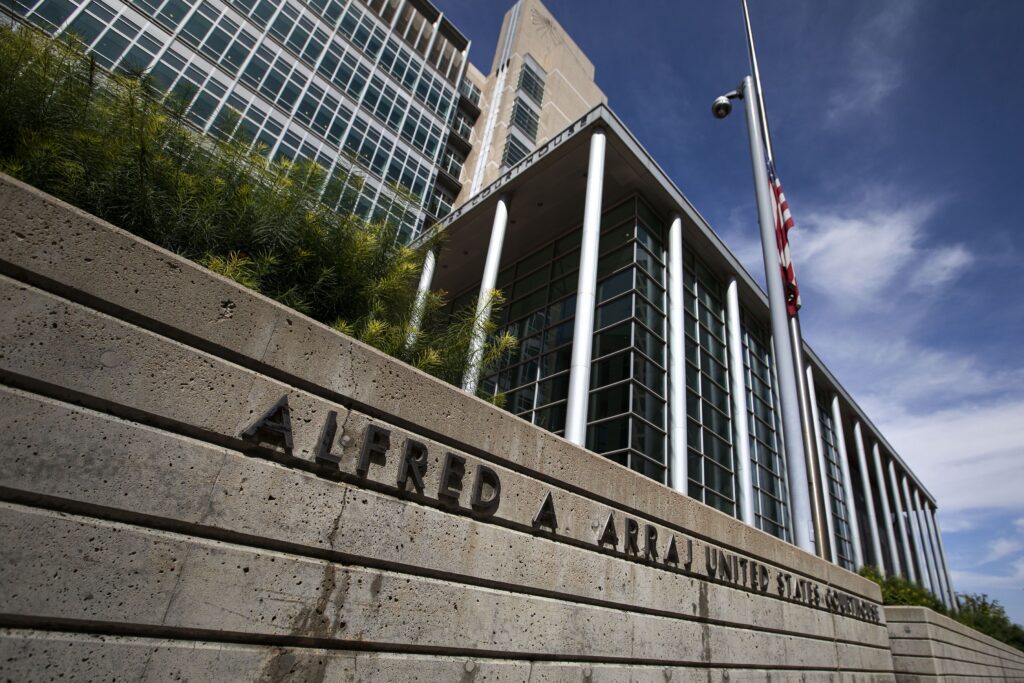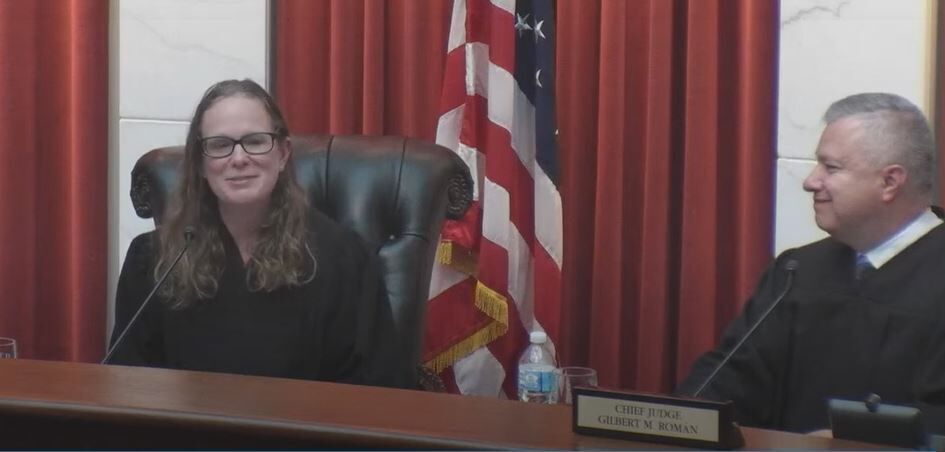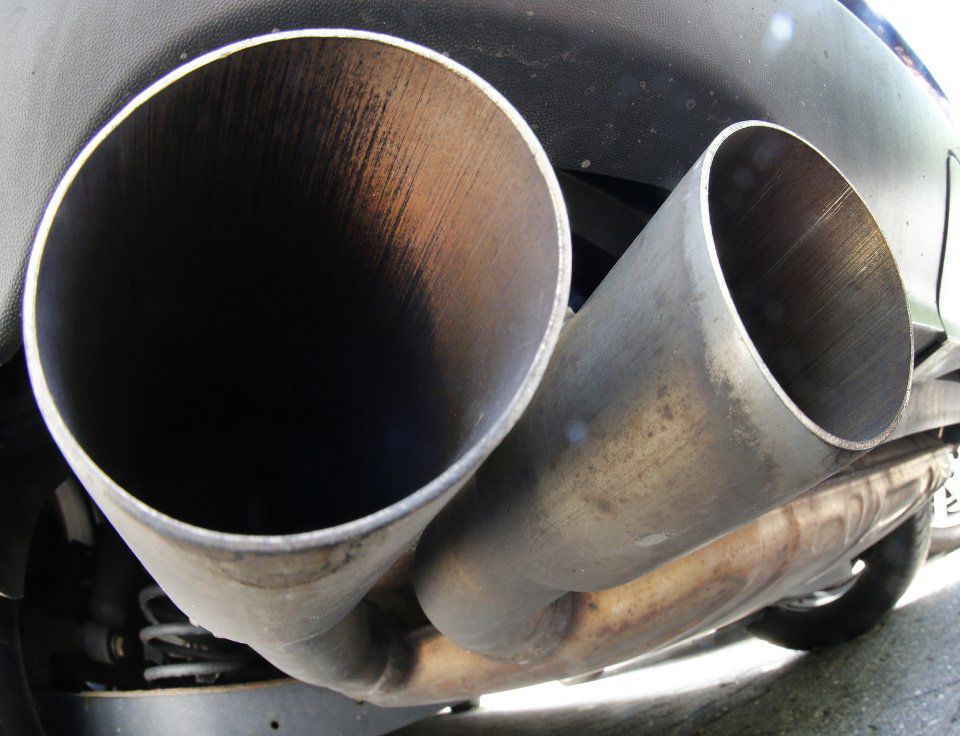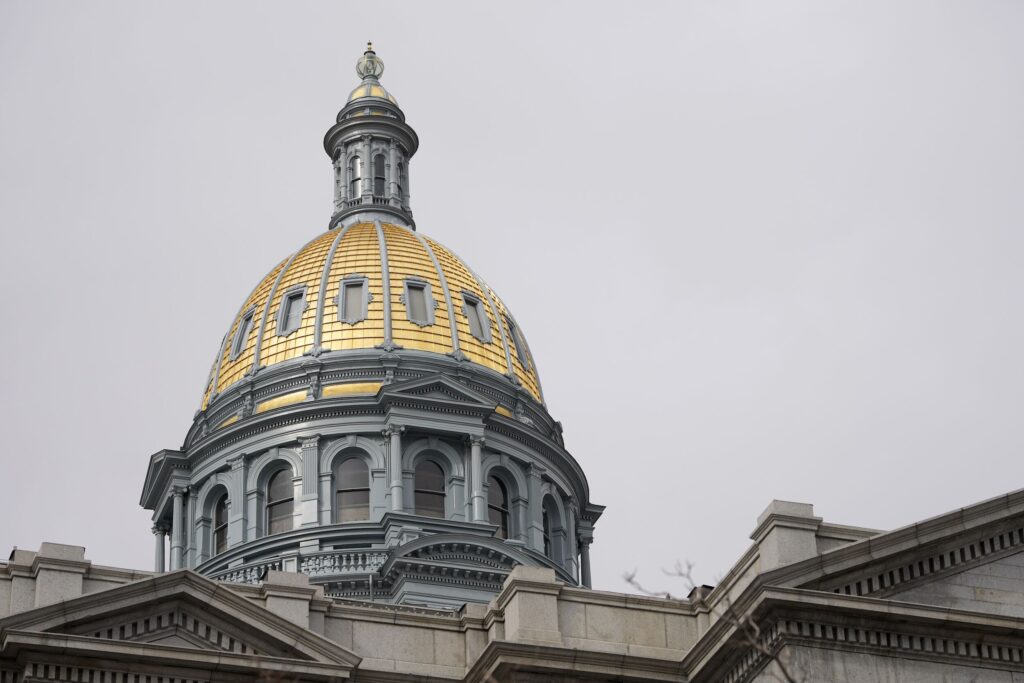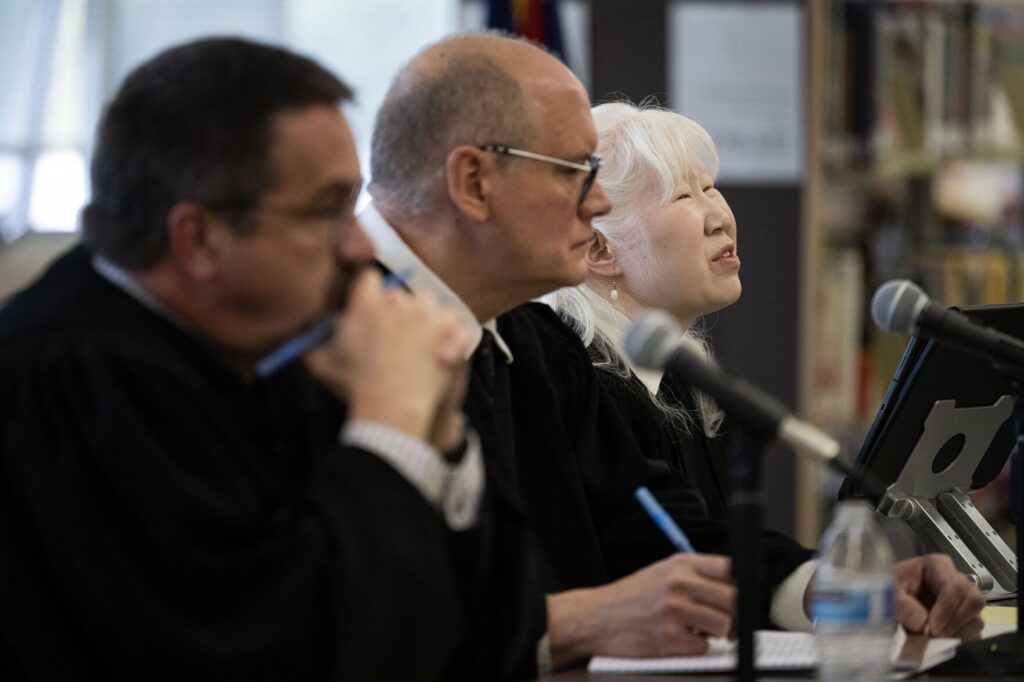Arapahoe elections officials prep for the big day
Two weeks before the Nov. 8 general election, the Colorado Secretary of State’s Bipartisan Election Advisory Committee had a firsthand look of how things are supposed to work election night in Arapahoe County.
Committee members toured the county’s 38,503-square-foot election facility and warehouse, 5251 S. Federal Blvd., in Littleton, on Tuesday, Oct. 11, for a step-by-step explanation of the ballot counting process. Before the tour, ballot security measures were explained by Deputy Director of Elections and Records Jennifer Morrell.
She said while the Colorado Secretary of State requires security and contingency plans to counter any Election Day problems, “with all the fervor and scrutiny that’s been placed on this year’s election, we decided to take it to another level.”
The county worked with its information technology and building security departments to help develop a 16-page checklist of items, Morrell said. Along with the $1.1 million purchase of new voting equipment to replace the county’s 10-year-old voting machines and 20-year-old tabulation machines and election management software and hardware with the secretary of state’s chosen statewide system by Dominion Voting Systems, mail ballot sorting equipment and other steps, Morrell called the county’s security top-notch.
With up to 300 people in the elections facility on election night, Morrell said it was important video cameras are monitored and actively reviewed and data was backed up to a different site. Equipment vendors contact county elections officials if they need internet access to the county’s data, Morrell noted; otherwise, the vote counting system is not connected online.
If internet service is lost, the county has a 4G wireless system to reach the Statewide Colorado Registration and Elections, or SCORE, system, Morrell stated.
“We’ve made a lot of improvements in the last year and we know we will still have opportunities to make things even better,” she said.
Arapahoe County’s voter registration numbers, as of Oct. 13, showed 138,227 Democrats, 118,269 Republicans and 152,983 unaffiliated and third-party voters, totaling 409,479.
County Clerk and Recorder Matt Crane said elections staff recently weeded out many of some 2,500 duplicate voter registrations. Most of those were found to have been due to human error inputting data, he said, “something we know we will have to get better at. It ended up most of those were the same names, with either ‘juniors’ or ‘seniors’ that should have been added.”
In Arapahoe County, just 0.0045 percent of its voter registration list was found to have duplicate registrations, Crane said. Postelection efforts are planned to continue to drop duplicate registration information, and other counties will be asked to do likewise.
Step-by-step tour highlights efficiency, security
Morrell led the committee through each step of the county’s ballot counting process, which begins with vans picking up ballot boxes throughout the county and driving them inside the facility to be unloaded. Teams of bipartisan judges – featured throughout the process – verify the boxes remain sealed, weigh the boxes and place unopened ballots into a machine that scans each envelope to help verify the signatures on each ballot.
Accepted and rejected ballot envelopes are separated from each other, opened and scanned and tabulated. Rejected ballots are reviewed by bipartisan judges to help decide voter intent, are machine tabulated, then voting results are tallied and reported.
Several of the eight steps are done in different rooms, behind doors that need security cards to open.
Crane said the current tabulation equipment saves time verifying ballot signatures.
“What takes just minutes to scan with this equipment used to take two or three hours because we did each ballot by hand,” he stated.
Morrell added the system can compare signatures to ones on past ballots, registration lists and other sources, up to 25 records in all.
Opening ballots used to create a bottleneck, since each one was done by hand, Crane said, and those in need of further review are tracked so none are lost.
“We hold on to every scrap of paper, there’s no recycling until days after the election,” Morrell added. “So we can even go through the garbage if we can’t find something.”
Ballot counting is expected to be as fast as 200 a minute, since the primary election – with far fewer ballots than the number expected in the general election – had a top rate of 100 a minute, she said.
Crane said with lengthy, two-page, double-side-printed ballots, he anticipated vote counting would last until the early morning hours of Wednesday, Nov. 9.
“We’ll probably send the judges home around 2 or 3 a.m., because you start to see the quality of work decline after they’ve worked until that time,” Crane said.
Any uncounted ballots are locked away and counted the next morning.
Ballot adjudication used to be done by teams of two bipartisan judges who re-marked each contested ballot by hand.
“That opened the potential for error and slowed the process,” Morrell said.
This system has those judges using computer screens and software programs to decide voter intent and find invalid write-in candidates such as Mickey Mouse, John Elway and Peyton Manning, Morrell added. Once those invalid votes are marked, the scanned ballot image is tabulated and no second ballot is created.
Reports are created at each step in the process that show which judges conducted each task, Morrell noted.
A lot of workers needed
The county will hire about 400 temporary workers as election judges and use motor vehicle workers, along with other county workers, for a total of around 1,200 people through Election Day and night, Morrell said. Another 155 employees staff the county’s 25 voter service centers until 7 p.m. election night.
Another $8,000 to $9,000 is spent to rent motor vehicles to haul ballot boxes back and forth to voter service centers between Monday, Oct. 17, when mail ballots are sent out, through election night, Morrell said.
All told, the county expects to spend around $600,000 to conduct the general election, not including regular and overtime expenses for the county’s full-time workers, equipment and software upgrades that are not just for the election, Morrell said.


